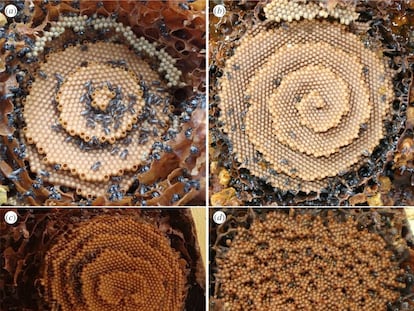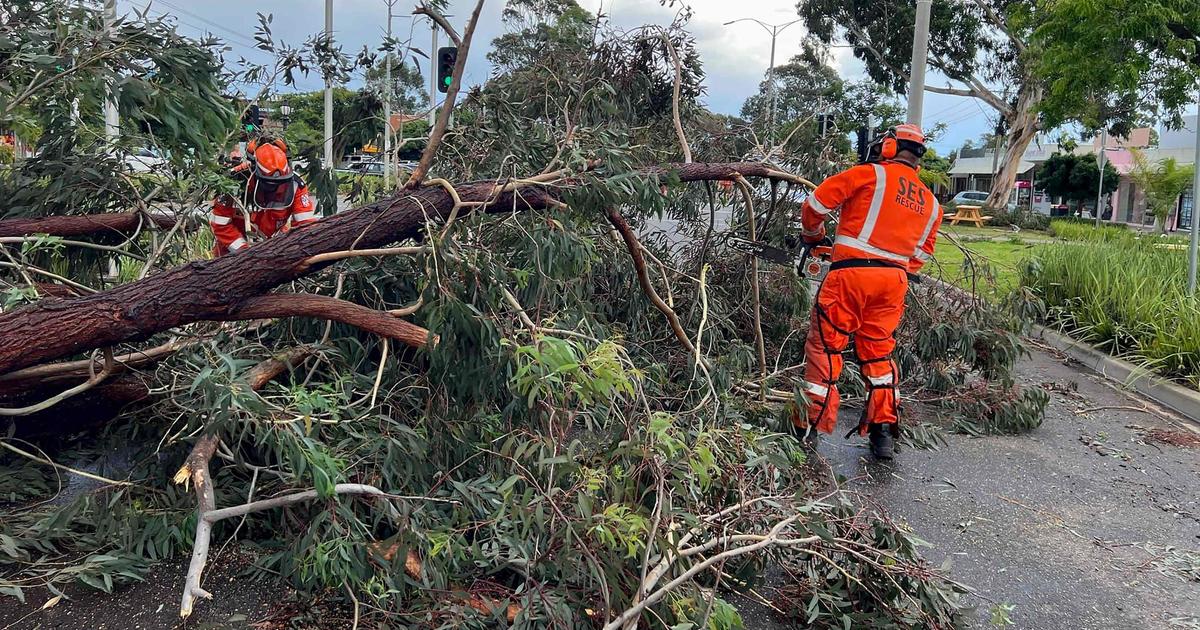The closer to a power pylon, the fewer flowers. And that has to do with the bees, stressed by the tower's electromagnetic field. This is what has been observed by a group of Chilean entomologists who have carried out a series of experiments in poppy fields and in the laboratory. The scientists found that exposure to electromagnetic fields altered the expression of bee genes related to stress and behavior. The result was that plants near the towers produced fewer seeds, affecting their survival. This could be happening throughout the laying and with other key insects for pollination.
The California poppy (Eschscholzia californica) is an invasive plant native to this region of the United States and Mexico. But the beauty of its orange flowers has made it ornamental, and it is cultivated in several areas of Mediterranean climate. There are also those who have found a medicinal use. The poppy needs bees for the pollination of its flowers. These insects are helped by a sophisticated navigation system supported by magnetic receptors to find the flower fields and return to the hive. But electromagnetic fields from pylons could be interfering with this ability, short-circuiting an interaction that is basic to both nature and agriculture.
After observing that the flowering of the plants was lower around the high voltage towers, Marco Molina, director of the Center for Integrative Ecology at the University of Talca (Chile) and a group of Chilean and Argentine researchers wanted to see what was happening. They suspected there was a connection between electricity, plants and bees. To investigate, they focused on several fields of California poppy (naturalized long ago in Chilean lands) in the town of Quinamavida. To compare the possible impact of electromagnetic fields, they located several high-voltage pylons, some of them out of use. "One of the experimental complexities is to evaluate the tower effect; that is, how the presence of a metal structure with hundreds of meters of cable affects the visits of pollinators," says Molina. That is why they studied the behavior of insects in areas with active and inactive towers.
More informationThe bees that 'draw' the most beautiful honeycombs in the world
As detailed in the scientific journal Science Advances, they measured the range and intensity of the electromagnetic field around the towers at various distances (10, 25, 20 and 200 meters and beyond) Near the inactive poles, the electromagnetic field did not reach 1.5 microteslas (the tesla is a unit of measurement of electromagnetism). Meanwhile, 10 meters from an active tower, the intensity was 9.47 microteslas, dropping by half at 50 meters and being negligible from 200 meters.
Bees use the Earth's electromagnetic field in their navigation, so there is a possibility that artificial electromagnetic fields interfere with the natural one. To find out, they analyzed honey bees (Apis mellifera) that visited the different fields. They saw that those foraging closer to the active towers produced an excess of a protein called HsP70. "We selected HsP70 because it has a functional role widely observed in insects and is activated against stressors; therefore, it acts as a molecular marker for an environmental stress condition," explains Molina. This stress manifests itself at the physiological level in an increase in temperature and alterations in the behavior of the animal.
To measure the extent of these alterations, the scientists conducted a series of experiments in the lab, exposing several bees to a solenoid, a coil that generates its own electromagnetic field when an electric current passes through it. After exposing them to a field of the same intensity as that measured near the towers, they studied the expression of 14 genes related to the immune system or navigation. In 12 of them, they observed differences in expression between exposed and non-exposed bees. As for the HsP70 protein, the expression was 52% higher in the former than in the latter.
The last part of the research focused on looking at the impact on pollination. Bees go where there are more flowers, regardless of whether there are pylons. But where there were, the frequency of visits to the nearest flowers (within 25 meters) was 308% lower than in fields where there was no active tower. The percentage reduction is limited to 16% if the flowers are more than 200 meters from the towers in operation.
A long-term negative effect
"But bees don't avoid these areas and that's precisely the problem. Being exposed to the electromagnetic field, even for very short periods, generates a negative physiological impact for a long time, which harms pollination," says Molina. The end result was that around the towers there was less abundance of California poppies and fewer flowers. Under them is the stem that hides the seeds, so the reproduction of the plant is compromised.
Although the scientists carried out their work in the vicinity of the towers, they are convinced that the impact is reproduced along the entire high-voltage line, as it would demonstrate that the towers, metal structures 20 meters high, did not affect the insects if they were disconnected. Although new studies would be needed, Molina ends up assuring that electromagnetic fields not only affect bees, but also "other pollinators that inhabit the area, including bumblebees, butterflies and beetles."
In 2019, Adam Vanbergen, a scientist at France's National Research Institute for Agriculture, Food and the Environment, led a review of what science knew about the impact on pollinating insects of different electromagnetic radiations, from visible light to that emitted by mobile phones. "In the visible spectrum there was growing confirmation that artificial light at night can alter pollinator communities, potentially affecting plant pollination," Vanbergen said. But, he adds, "then, there was no evidence from fieldwork or solid scientific studies showing a clear effect of the non-visible part of the spectrum of human-produced electromagnetic radiation."
Hence, Vanbergen values this work of Chilean scientists. "It seems solidly executed and has a good combination of laboratory testing of physiological impacts and field evidence of disruption of insect foraging and plant pollination," he says. This French expert in pollination ecology highlights the use of active and inactive towers to base the observed effects on electromagnetic radiation and not on other sources. As for the impact on other species, Vanbergen recalls that the honey bee is "a very social bee, with a powerful ability to orient itself in the landscape and can be more sensitive than pollinating insects to this disturbance, so care should be taken to extrapolate it to other species."
You can follow MATERIA on Facebook, Twitter and Instagram, or sign up here to receive our weekly newsletter.



/cloudfront-eu-central-1.images.arcpublishing.com/prisa/TMO34TYLKQEG5UOPIQW2M742GU.jpg)


/cloudfront-eu-central-1.images.arcpublishing.com/prisa/NMC3TCY2MFFEDLWCDJN6WFKM4Y.jpg)

/cloudfront-eu-central-1.images.arcpublishing.com/prisa/WTBKRDIX6ZE3LORP2WWAXVTQMQ.jpeg)
